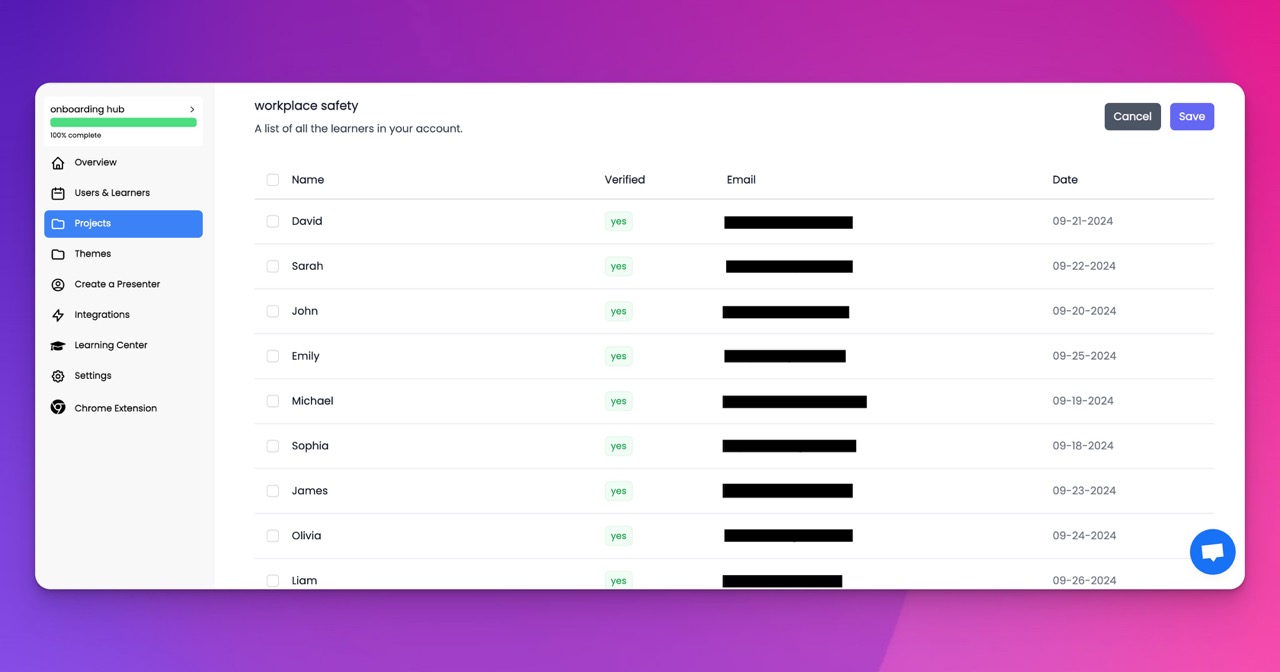🎉 Trainday now integrates with Zendesk and Hubspot 🎉 Trainday now integrates with Zendesk and Hubspot 🎉 Trainday now integrates with Zendesk and Hubspot
🎉 Trainday now integrates with Zendesk and Hubspot
🎉 Trainday now integrates with Zendesk and Hubspot
Contact
"Revolutionizing Compliance Training: Unleashing The Power Of AI Avatars For Enhanced Learning Experience"
Revolutionizing Compliance Training: Unleashing the Power of AI Avatars for Enhanced Learning Experience
Compliance training is a crucial aspect of any organization, ensuring that employees are equipped with the necessary knowledge and skills to adhere to legal and regulatory requirements. However, traditional compliance training methods often fail to engage learners or provide an immersive learning experience. This is where the power of AI avatars comes into play, revolutionizing compliance training and enhancing the overall learning experience for employees.
AI avatars, also known as virtual assistants or chatbots, are computer generated characters that interact with users through voice or text. These avatars are powered by artificial intelligence, allowing them to understand and respond to user queries in a human like manner. By leveraging the capabilities of AI, organizations can create personalized and interactive compliance training programs that captivate learners and drive better knowledge retention.
One of the key advantages of using AI avatars in compliance training is their ability to simulate real life scenarios. Instead of presenting learners with static content in the form of presentations or manuals, AI avatars can engage learners in dynamic conversations. Learners can ask questions, seek clarifications, and receive instant feedback, making the training experience more interactive and engaging. This helps employees understand the practical implications of compliance regulations and develop the necessary skills to handle real world situations.
Furthermore, AI avatars can adapt to individual learning styles and pace. Unlike traditional classroom based training, where learners have to keep up with the instructor's speed, AI avatars can adjust their delivery based on the learner's preferences. Whether it's breaking down complex concepts into simpler terms or providing additional information on specific topics, these avatars can cater to the unique needs of each learner. This personalized approach not only enhances learner engagement but also improves knowledge retention and application.
Another significant advantage of leveraging AI avatars in compliance training is their availability and scalability. Unlike human instructors, who have limited availability and can only train a certain number of employees at a time, AI avatars can be accessed 24/7 by learners across geographies. This ensures consistent and standardized training experiences for all employees, regardless of their location or time zone. Moreover, organizations can easily update and iterate their compliance training programs by simply updating the AI avatars' knowledge base, ensuring that employees receive the most up to date information.
Additionally, AI avatars can provide insights and analytics on learners' performance and progress. By analyzing learners' interactions and responses, organizations can identify knowledge gaps and areas that require additional training. This enables organizations to tailor their compliance training programs based on the specific needs of their workforce, ensuring maximum effectiveness and compliance adherence.
However, while AI avatars offer numerous benefits in revolutionizing compliance training, it is essential to strike a balance between technology and human touch. While AI avatars can provide instant responses and personalized experiences, they might lack the empathy and emotional intelligence that human instructors can offer. Therefore, organizations should consider integrating AI avatars with human led training sessions or incorporating opportunities for learners to interact with subject matter experts.
In conclusion, AI avatars are transforming compliance training by providing interactive, personalized, and scalable learning experiences. By simulating real life scenarios, adapting to individual learning styles, and offering availability and scalability, AI avatars enhance learner engagement, knowledge retention, and application. Organizations that embrace AI avatars in their compliance training programs can ensure that employees are well equipped to navigate the complex world of regulations, fostering a culture of compliance and risk mitigation.
Accelerate Compliance.
Deliver OSHA-Ready Courses Instantly.
Empower your team with data-driven training solutions tailored to your industry's safety standards. Stay compliant, reduce risks, and boost productivity with AI-powered course creation.
